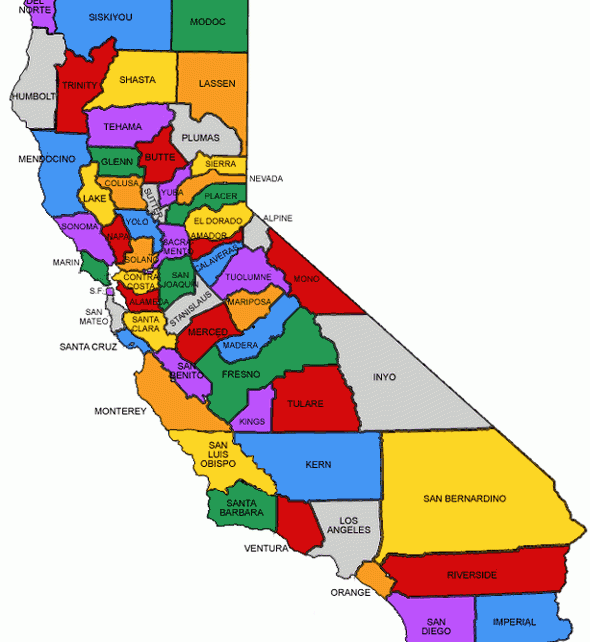
Have you ever wondered what the exact county count in California is? You’re not alone. From trivia nights to travel planning, the number 58 keeps popping up, butthose two digitsis just the first layer of a deeper tale.
The Golden State’s 58 counties createa patchwork of contrasts: fog-kissed seaside towns, snow-capped alpine districts, fruit-laden interior valleys, and historic mission settlements. Each county carries its own story, forged throughimmigration waves, cutting-edge innovation, and relentless population booms.
In the sections ahead, we’ll explore why California ended up with 58 counties, the services counties deliver day-to-day, and the outliers that set fascinating records. Ultimately, you’ll own the knowledge—and map your next California adventure with confidence.
Origins of California’s 58 Counties
Upon admission to the United States, the map contained barely half the jurisdictions we know now. An unprecedented population boom forced lawmakers to redraw borders. By the end of the 1870s, the count had expanded toward more than fifty counties, and by 1907 the last adjustments were ratified, locking in the now-famous tally of fifty-eight.
Assembly journals reveal that most new counties stemmed from a trio of factors:
- Sheer distance left settlers days from the nearest courthouse.
- Revenue battles between miners and farmers sparked break-ups.
- Language and immigrant communities wanted self-rule.
By 1920, the political map settled. In modern times, even bold secession schemes rarely get ballot traction, causing commentators to dub the era when new counties sprouted a finished chapter.
From Kelp Forests to High Deserts: County Geography
Plot a route from foggy Crescent City to sun-baked Imperial touching Mexico, and you’ll traverse every Köppen zone short of tundra. Coastal counties enjoy fog-cooled summers, while great agricultural belts record triple-digit heat.
- Alpine districts such as Mono, Mariposa, and Calaveras store California’s snowpack.
- River-delta territories mix levee farms with wetlands.
- Island counties like Ventura manage marine sanctuaries.
Such variety explains how water rights, zoning, and ag yields diverge so sharply. Climate, after all, shapes crops and careers.
Behind the Scenes at the County Level
Amid Sacramento’s delegated framework, cities tackle local bylaws, but counties shoulder the bread-and-butter functions that hold civilisation together. Life’s paperwork trail—marriage licenses, tax rolls, voter registries—all sit at the county clerk or recorder.
County law-enforcement offices patrol unincorporated land, while county benches hear civil suits. Social-services bureaus distribute food assistance. Funding debates occur in monthly Board of Supervisors sessions.
Case Study: Tiny Alpine County
Tiny Alpine operates from a single two-story courthouse, highlighting how elastic the system is. Uniformity would never work when populations range from under 1 200 to over 10 million.
In the end, these 58 mini-capitols translate state statutes into daily action. Knowing their role helps residents demand accountability.
Population, Economy, and Record-Holding Counties
Home to over 39 million residents, but the headcount clusters unevenly. Los Angeles County alone packs nearly 25 %. Conversely, high-elevation Alpine could fit its voters into a high-school gym.
- Largest population: County of Los Angeles
- Least populous: Alpine County
- Largest area: San Bernardino
- Tightest borders: San Francisco
Economically, the disparities are just as sharp. South Bay enclaves boast per-capita GDP rivaling small nations, while cotton-and-almond hubs battle mechanisation and drought cycles. This revenue gap informs legislative redistricting every decade.
Knowing which county tops which listmakes relocation plans simpler: county metrics shape property taxes and commute times.
The Ultimate California County Circuit
County-collecting hobbyists, setting foot in each CA county is the new bucket-list quest. One ambitious loop sets out in the south-west corner, rolls up the Pacific Coast Highway, jogs east near Monterey, then zigzags across the Central Valley’s orchard belt, before ascending into the Sierra Nevada for old stamp mills.
Regional Mini-Loops
- South-land Loop – San Diego to Santa Barbara; 10 counties in four days.
- Valley Ribbon – Grapes to rice paddies; produce-market run.
- Shasta & Siskiyou Turn – mountain lakes and volcano cones; fire-lookout hikes.
Close the circuit in the desert southeast, after two thousand kilometres of asphalt. At that point, you can answer any road-trip quiz about county tallies—because you’ve seen them all!
FAQ
Below you’ll find concise answers to the most common county-related queries.
How many counties does California have?
State records confirm fifty-eight counties—a total locked in for over a century. Whether you ask the Secretary of State, the how many counties are in the state of california Census Bureau, or a local historian: 58 in all.
Where do the most Californians live?
The population heavyweight is Los Angeles County, home to over 10 million residents. Decades of immigration, entertainment dominance, and job growth keep the numbers high.
Which CA county has the fewest residents?
Tiny Alpine County sits at the bottom of the population chart, rarely crossing the 1 200-resident mark. High-elevation geography limits large-scale development, making it a haven for solitude seekers.
What is California’s biggest county geographically?
The land-area giant is San Bernardino County stretching more than 20 000 square miles. You can drive for hours without leaving its borders—crossing ski slopes, dunes, and bedroom communities.
Why does California have exactly 58 counties?
Gold-rush politics, rail expansion, and farmland disputes carved today’s boundaries, wrapping up after Imperial broke from San Diego in the early 20th century. While secession talk appears now and then, no plan has passed statewide hurdles.
Could a region break away to become its own county today?
Technically, the California Constitution leaves the door open, though the process is arduous. Petition drives, feasibility studies, dual-county referenda, and a two-thirds vote in Sacramento make secession rare. Consequently, boundaries have frozen for over a century.
What services do California counties provide to residents?
County governments deliver core public services: property assessments, public hospitals, welfare programs, and jails. Their wide remit bridges state mandates with community needs, making the 58 jurisdictions essential to all Californians.